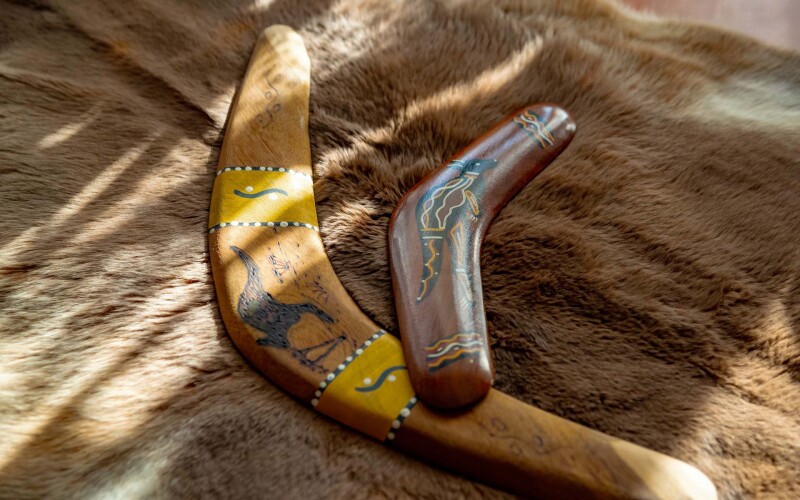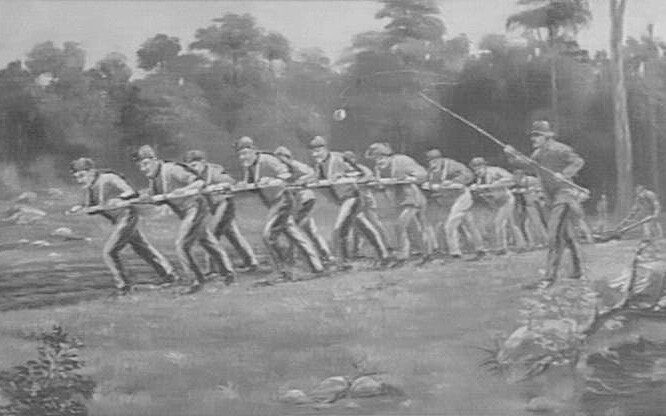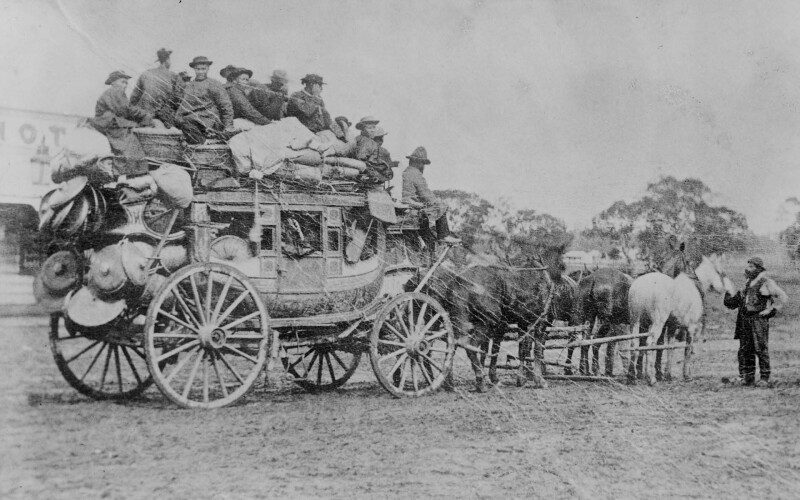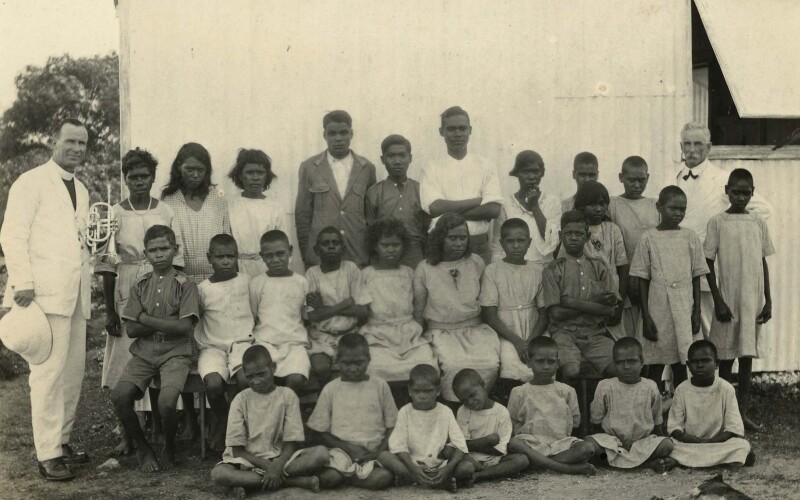Australia has a captivating history of discovery, growth, and change. Those who have roots in Australia are enthralled to learn the country's history and how it has impacted their ancestral family.
Evidence of Early Life in Australia
Imagine this—archaeological artifacts point to life in Australia up to 65,000 years ago. The aboriginal people believe they have been on the Australian continent since the creation. Though there is no actual proof for that claim, legend and tradition seem to support a very long presence for them in Australia.

Scientists suggest that the aboriginal people came from Southeast Asia to Australia 45,000 to 50,000 years ago during a time of lowered sea levels. They could more easily have crossed into the Northern Territory of Australia on land bridges that formerly existed between Asia and Australia. DNA evidence reveals that there are some African roots as well. The history of the aboriginal people is passed down through stories and art. These people are thought to be the original hunters and gatherers who were extremely good at their craft.
The Boomerang: A Prominent Piece of Australian History

Evidence for the boomerang, a curved throwing stick, shows up about 20,000 years ago. The boomerang is a symbol of Australia that may have originally been created by the aboriginals to aid in hunting bird and game as well as fish.
Boomerangs have also been used as weapons—and can be deadly if thrown in the right manner. In addition the tool can be used as a digging stick to look for vegetables or even to make fire. And last but not least, they are used as a percussion instrument and dance accessory in Aboriginal music and dance.
Explorers Discover Australia
January 31, 1606, marks the day when explorer Willem Janszoon, captain of the Dutch East India Company, became the first European to touch land in Australia. He and his crew didn’t stay long after they made contact with the Wik Indigenous people, an encounter that led to the death of 9 crew members.
Other Dutch navigators also stopped in Australia in 1616 and 1629, but again conflict with the Indigenous people forced the groups to leave quickly. The first Englishman to stay and explore Australia was William Dampier, who arrived on August 5, 1699. He charted part of the Australian coastline and attempted some scientific study. He did not clash with the Indigenous peoples but had to return to England because of troubles with his ship.
Seamen began trading with the Aboriginal peoples in 1700. That period also saw continued battles and fighting between the white settlers and the Aboriginal people. By the late 1700s white settlers were coming by the boatload to the Sydney area, which threatened the Aboriginal way of life.
Convicts Arrive in Australia
The First Fleet—British ships carrying settlers and convicts—landed in Sydney in 1788. Aboriginal warrior Pemulwuy led a resistance against the white settlers. However, things did not end well for him. By 1802 he had been captured and shot dead. The white settlers continued to engage in even more frequent slaughter of the aboriginals.

Over the next 80 years until 1868, more than 162,000 convicts were shipped to Australia by Britain and Ireland as punishment for their crimes. Great Britain began using Australia as a penal colony to take the pressure off their own prisons. Two major penal colonies—New South Wales and Van Dieman's Land (which later became Tasmania)—housed the prisoners.
When they completed their sentences, many of the convicts stayed in Australia, claimed land, and became successful settlers. Former convicts even served as the first postmaster and the founder of the free press.
Further Exploration of Australia
In 1803 British explorer Matthew Flinders went all the way around Australia. He charted much of the coastline that hadn’t been charted previously and was able to prove that Australia was a single continent. He used the term “Australia” in his maps and writings, and the name stuck. Before that time, Australia was called “New Holland” by many of the early Dutch explorers who had tried to map Australia.
Australian Gold Rush

Gold was discovered in Australia in 1851, and it caused great changes in the growing Australian colonies. The discovery of gold at Ophir in New South Wales was soon followed by a gold rush in Bendigo Creek in Victoria. It didn’t take long for gold rushers to start flooding into Australia from all over the world. Within the first year, over 500,000 people, often nicknamed “diggers,” tried their luck at finding gold in New South Wales and surrounding areas.
Gold rushes were good for Australia. The arrival of the gold seekers bolstered the country's population and economy and helped overcome Australia's reputation of being an island filled with convicts. Wages doubled, and many left their jobs to search for gold. These “diggers” formed their own identity, which was separate from British authority.
Australia Becomes a Commonwealth
Australia became its own commonwealth on January 1, 1901, when the British Parliament passed legislation allowing the 6 Australian colonies to govern themselves. Twelve years later Canberra was named the official capital of Australia. The efforts of the people to develop the capital were interrupted by the First and Second World Wars. After WWII Canberra began to grow and now has a population of over 400,000 people.
The Stolen Generations
Around the turn of the twentieth century, churches, governments, and welfare groups began to remove children by force from aboriginal and Torres Strait Islander families. These children became known as the Stolen Generations. The removal of the children was legalized by various governments and created much trauma and sadness in First Nation communities. This loss continues to affect families today.

The government policies claimed that the children would be protected from neglect and their lives improved if they were living within a white society. These policies, called assimilation policies, basically sought to separate the children from their heritage so they could function better in a white society. The governments felt that the aboriginal and Torres Strait Islander peoples should be allowed to “die out” through intermarriage. Children who were taken were denied access to their families, languages, communities, and cultures.
By 1969, New South Wales did away with the Aborigines Welfare Board, which action effectively stopped all states and territories from removing the aboriginal children from their families. Since the late 1960s, efforts have been made to help restore and reunite families and revive their stories and traditions.
British Home Children
Between the 1920s and 1970s, more than 130,000 British children were shipped to Australia and Canada as migrants. Many of the children were sent into a life of servitude, hard labor, and abuse, even though it was claimed they were being sent for a better life. The children—between the ages of 3 and 14—had typically been in some kind of charitable care in Great Britain. The last group of children was sent in 1967.
The prime minister of Great Britain issued an official apology to the children and families in 2010. Around the same time the Australian government issued an official apology to the stolen generations, forgotten Australians, and former child migrants.
The History and Future of Australia
Today Australia boasts a strong economy and considers itself a world leader in many areas. In discovering your family history in Australia, you will find a vast, rich history and discover the triumphs of a group of people determined to succeed.
At FamilySearch, we care about connecting you with your family, and we provide fun discovery experiences and family history services for free. Why? Because we cherish families and believe that connecting generations can improve our lives now and forever. We are a nonprofit organization sponsored by The Church of Jesus Christ of Latter-day Saints. To learn more about our beliefs, click here.

